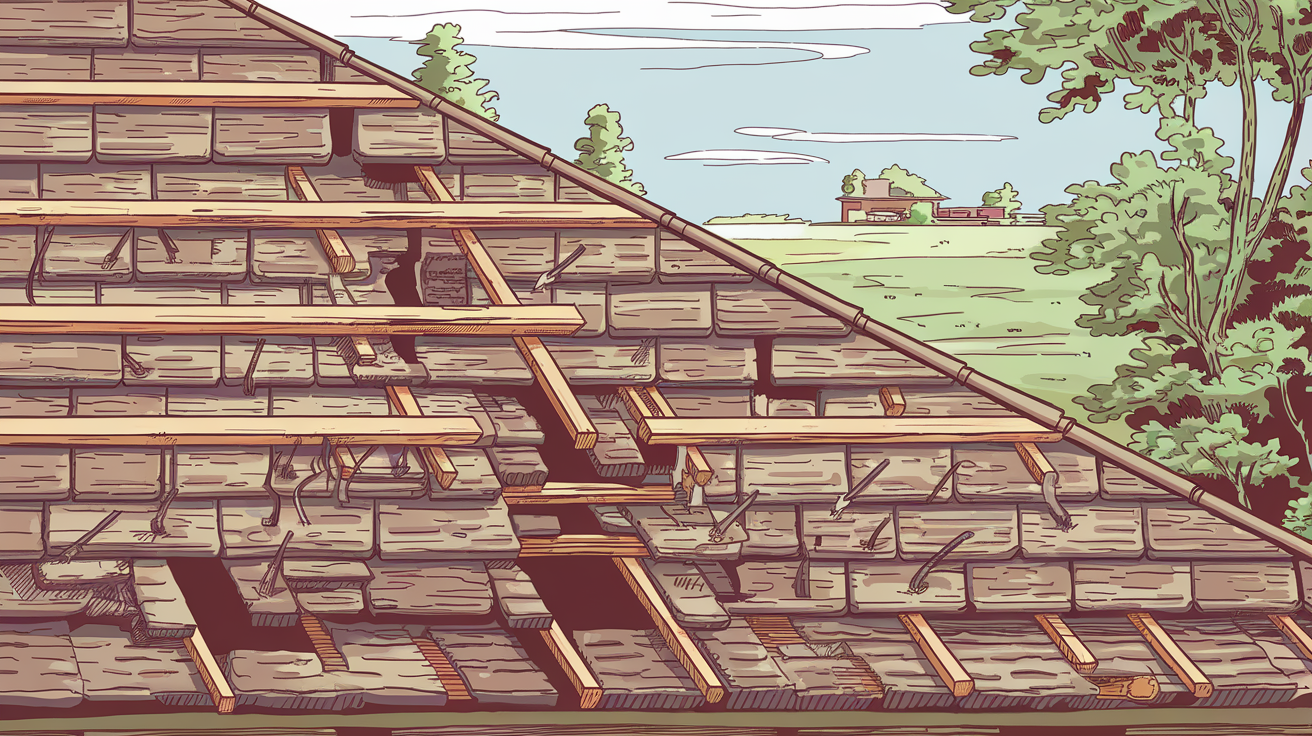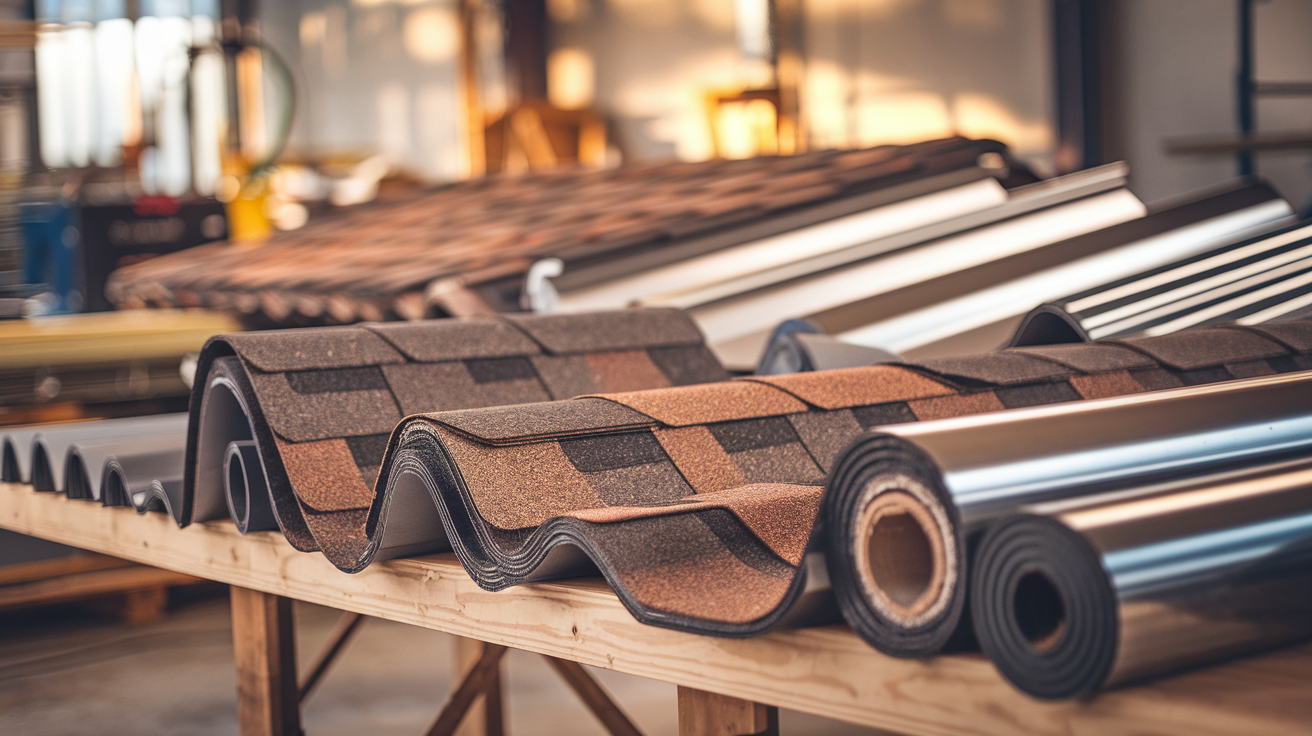Proper Roof Nailing Guide: Prevent Costly Leaks & Wind Damage
Did you know that improper nail installation is responsible for up to 85% of roof failures during severe storms? Your roof's ability to withstand harsh weather and protect your home largely depends on something seemingly simple: how well the nails are installed. For homeowners, this often-overlooked detail can mean the difference between a secure roof and costly repairs.
Proper nailing during roof installation is crucial for preventing two of the most common and expensive roofing problems: blow-offs and leaks. When nails are incorrectly placed, driven too deep, or not deep enough, they create vulnerable points that can lead to thousands of dollars in damage. Even a single misplaced nail can create a pathway for water infiltration or become a weak point during high winds.
In this comprehensive guide, you'll learn the essential aspects of proper roof nailing, including correct techniques, common mistakes to avoid, and how to ensure your roof is installed to last. We'll explore expert-recommended practices, material selection, and regional considerations that affect nail installation. Whether you're planning a new roof installation or wanting to understand your existing roof's condition better, this information will help you make informed decisions about your home's protection.
Table of Contents
- Understanding the Importance of Proper Nailing in Roof Installation
- Preventing Roof Blow-Offs with Proper Nailing
- Avoiding Leaks with Correct Nailing Practices
- Selecting the Right Materials and Tools for Roof Nailing
- Regional Considerations and Professional Guidance
Understanding the Importance of Proper Nailing in Roof Installation
Proper nailing is crucial for a successful roof installation, ensuring the roof's structural integrity and preventing issues such as leaks and blow-offs. Improper nailing can make a roof vulnerable to wind and weather damage, leading to costly repairs or even roof failure. Selecting the right nail type and ensuring proper placement are key to a long-lasting, effective roof. Consider getting a roof assessment to ensure your roof is properly installed.
Key Statistics on Roof Failures Due to Improper Nailing
Roof failures due to improper nailing are a significant problem. Incorrect nail placement and inadequate penetration are major causes of roof damage, contributing to a high number of shingle blow-offs during storms. Misaligned nails create weak points, allowing water penetration and leading to leaks and shingle damage. Many roofs experience wind damage from overdriven or underdriven nails, impacting their ability to withstand severe weather. Overdriven nails create larger holes, making shingles susceptible to wind uplift, while underdriven nails don't secure shingles tightly to the decking. Proper nailing practices drastically reduce roof failures, improving performance and lessening maintenance. You can learn more about roof maintenance to protect your investment.
Common Nailing Mistakes
- Misaligned Nails: Lead to leaks and shingle damage.
- Inadequate Penetration: Causes loose shingles.
- Wrong Nail Type: Can cause shingle blow-offs.
Common Nailing Mistakes and Their Consequences
Several common nailing errors can compromise a roof. Misaligned nails, often driven at an angle or placed outside the designated nailing zone, lead to leaks and shingle damage. Another frequent problem is inadequate nail penetration. Nails not driven deep enough—at least ¾-inch into or completely through the wood deck—can cause loose or falling shingles and increase the risk of leaks and further damage. Using the wrong nail type or size for the roofing material can also cause problems, such as using shorter nails on thicker shingles. Choosing the correct nail type for your roofing material is essential. Consider the nail material (like galvanized steel for durability), length, and head size. Avoiding these mistakes significantly improves the durability and reliability of roof installations.

Preventing Roof Blow-Offs with Proper Nailing
Roof blow-offs are a major concern for homeowners as they can lead to costly repairs and interior damage. Proper nailing is key to preventing blow-offs. Understanding common nailing mistakes and best practices can significantly improve a roof's durability and safety. This section explains how improper nailing causes blow-offs and recommends techniques for increasing wind resistance. Consider a Get Your Roof Assessment to identify potential vulnerabilities.
How Improper Nailing Leads to Blow-Offs
Improper nailing is a primary cause of roof blow-offs. Under-driven nails don't fully secure shingles to the plywood or OSB decking, making shingles more likely to loosen or detach in high winds. Misaligned nails also reduce grip and increase the risk of wind damage. Over-driven nails, where the nail head is sunk too deep, can damage the shingle material, creating weak points that make it easier for wind to lift the shingles.
Effects of Improper Nailing
- Under-driven Nails: Increased risk of shingle detachment.
- Misaligned Nails: Reduced grip, higher wind damage risk.
- Over-driven Nails: Creates weak points in shingles.
Recommended Nailing Techniques to Enhance Wind Resistance
Proper nailing techniques are essential for preventing blow-offs.
Nail Penetration
Nails should penetrate the roof decking by at least ¾ of an inch. Some shingle manufacturers, like Owens Corning®, recommend full deck penetration for maximum hold in high-wind areas.
Nail Material
Choosing the right nail material is also important:
- Galvanized Steel: Offers good rust resistance and durability, especially in damp climates.
- Aluminum: Lightweight and rust-resistant, ideal for coastal regions.
- Stainless Steel/Copper: Excellent corrosion resistance for long-lasting performance.
Nail Placement and Quantity
Nails should be placed in designated nailing areas, sometimes called "The Zone," to optimize hold and prevent damage. Using the correct number of nails, usually four per shingle, is vital. Due to shingle overlap, a four-nail pattern results in eight nails securing each shingle.
Avoiding Leaks with Correct Nailing Practices
Proper nailing is essential for a leak-free roof. Incorrect nailing techniques can lead to water damage, premature roof failure, and costly repairs. Understanding the consequences of improper nailing and following best practices can safeguard your home and extend the life of your roof. Consider a Get Your Roof Assessment to identify potential nailing issues.
The Impact of Incorrect Nailing on Roof Leaks
Incorrect nailing is a primary cause of roof leaks. Misaligned or crooked nails create openings where water can penetrate, damaging shingles and causing leaks. Under-driven nails can cause shingles to loosen and blow off, increasing vulnerability to leaks. Industry data indicates that roughly 25% of home insurance claims relate to water damage and freezing, second only to wind and hail damage, underscoring the importance of proper nailing in protecting your home.

Understanding Under-Driven Nails
An under-driven nail hasn't penetrated the wood decking sufficiently. Nails should penetrate at least ¾ of an inch into the decking for optimal performance. Owens Corning® recommends a penetration depth of ¾ inch or completely through the deck for their shingles.
Effective Nailing Strategies to Ensure Leak Prevention
Preventing leaks requires diligent attention to nailing techniques during roof installation.
Nail Length and Penetration
Use nails long enough to penetrate both the shingle and the decking by a minimum of ¾ of an inch. This secures the shingles and reduces the risk of wind damage.
Nail Placement and Drive Depth
Drive nails straight and flush with the shingle surface. Avoid over-driving, which can damage shingles and compromise their waterproof integrity. Over-driving creates depressions that can collect water, potentially leading to leaks.
Nail Type and Material
Different roofing materials require specific nail types and lengths. For example, tile roofs typically require longer nails than asphalt shingles.
Common Roofing Nail Materials
- Aluminum: Ideal for coastal areas due to their rust resistance.
- Galvanized Steel: A cost-effective option with good corrosion resistance.
- Stainless Steel: Offers superior corrosion resistance.
- Copper: Provides excellent durability.
Specialized Nailing Zones
Some manufacturers, like Malarkey, incorporate specialized nailing zones like The Zone®, a wider nailing area designed for improved accuracy, fewer blow-offs, and reduced leaks. By adhering to these nailing best practices, homeowners can significantly improve roof longevity, prevent leaks, and protect their investment.
Selecting the Right Materials and Tools for Roof Nailing
Choosing the correct materials and tools for roof nailing is crucial for a long-lasting and effective roof. Proper selection prevents issues like shingle blow-offs and leaks, often caused by using the wrong nails or tools. This section explains the different nail types and the best tools for secure and efficient roof nailing. Investing in a thorough roof assessment can help identify potential nailing issues before they become major problems.
Overview of Nail Types for Various Roofing Materials
Roofing nails come in various types for different roofing materials. Common types include aluminum, stainless steel, galvanized steel, and copper.
Aluminum Roofing Nails
Aluminum nails are lightweight and rust-resistant, ideal for coastal areas with salt air. This helps prevent rust stains and extends roof life in harsh environments.
Stainless Steel Roofing Nails
Known for strength and durability, stainless steel nails are excellent for high-wind areas due to their superior holding power. They are less likely to pull out, keeping shingles secure.

Galvanized Steel Roofing Nails
Galvanized steel nails balance cost and corrosion resistance, making them a popular choice. A zinc coating protects them from rust.
Copper Roofing Nails
Copper nails offer excellent corrosion resistance and are often used in high-end projects where appearance matters. They are a long-lasting, visually appealing option. Different roofing materials have specific nail penetration guidelines. Tile roofs, for instance, often need longer nails than asphalt shingles because of their weight and thickness.
Recommended Tools for Accurate and Effective Roof Nailing
Using the right tools is as important as the right nails.
Pneumatic Roofing Nailer
A pneumatic roofing nailer is recommended for its speed and efficiency. It ensures consistent nail placement and depth, reducing the risk of under-driven or over-driven nails.
Hand-Held Hammer
Hand-held hammers require more skill and can lead to inconsistent results. If using a hammer, practice on scrap material to avoid damaging shingles.
Choosing the Right Nail Length and Shape
Choosing the right nail length and shape is critical for a successful roof installation.
Nail Length
Nails should penetrate the shingle and the plywood or OSB decking beneath by at least 3/4 of an inch. For Owens Corning® shingles, nails should penetrate the wood deck by a minimum of ¾-inch or completely through the roof deck. This secures the shingle to the roof structure. Under-driven nails can lead to loose shingles and leaks.
Nail Shape
Nail shape is important because some shapes are designed for specific materials. Square and round cap nails are often used for roof underlayment. Their larger caps provide better holding power, creating a secure base for the shingles.
Safety Gear and Accessories
Safety gear is crucial for protecting workers.
- Gloves: Protect hands from sharp nails.
- Goggles: Shield eyes from debris.
- Harnesses: Prevent falls.
A chalk line helps ensure straight nail lines, important for structural integrity and a professional look. A magnetic sweeper collects fallen nails, preventing hazards. Over-driven nails can damage shingles and create leaks by causing small cracks or dimples. They can also crush shingle granules, reducing weather resistance. A professional roof assessment can help identify and address these issues.
Regional Considerations and Professional Guidance
The Influence of Regional Weather Conditions on Nailing Practices
Regional weather conditions significantly influence best practices for roof nailing. High-wind areas, like coastal regions, often demand roofing nails with superior holding power to prevent shingle blow-off. This includes factors like the nail material and size. Galvanized or stainless steel nails are often preferred for their durability and rust resistance in these environments. Their larger head and shank diameter, compared to staples, contributes to their superior holding power. For a professional assessment of your roof's needs, consider our Get Your Roof Assessment. Heavy snowfall regions have different needs. Roofing systems in these areas may require more nails to support the weight of accumulated snow. This distributes the snow load more evenly, preventing stress on individual shingles. Generally, roofing nails should penetrate the roof deck by at least ¾-inch for adequate support against wind and snow. This depth ensures a secure grip in the underlying wood.
Expert Tips and the Importance of Hiring Experienced Contractors
Hiring experienced roofing contractors is essential for proper nail application and leak prevention. These professionals understand the specific nailing techniques for different materials and regional conditions. They know the importance of correct nail placement and depth to prevent shingle damage and leaks. Incorrect placement, such as angled or high nails, can cause these issues. Insufficient penetration depth can lead to loose or falling shingles. Choosing the right nail type for the roofing material is crucial, as mismatched nails can lead to premature roof failure. Several types of roofing nails exist, including stainless steel, galvanized steel, aluminum, and copper, each with specific benefits and applications. Nail shape also matters, as some shapes are better suited to particular materials. Square and round cap nails, for instance, are common for roof underlayment due to their holding power. Experienced contractors offer valuable maintenance advice, such as regular inspections and timely repairs, which extends roof lifespan. They can address issues like overdriven nails, which increase wind damage risk. Roofing underlayment provides an extra weather barrier, protecting the roof deck before shingle installation and offering additional protection against blow-offs and leaks. Hiring a professional ensures your roof can withstand local weather, protecting your investment.
Disclaimer: This blog post is intended for informational purposes only and should not be considered professional roofing advice. Always consult with qualified roofing contractors and insurance professionals for specific guidance regarding your individual circumstances.
